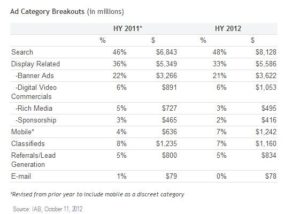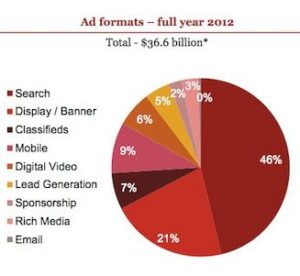
That’s not just because most online traffic now comes from mobile devices. It’s also because companies like Google are transforming their own services to favor mobile-first usage.
Let’s take a deeper look, shall we?
Over the past year, Google has quietly switched to a mobile-first search index. This means that, rather than indexing the desktop version of your page, Google is crawling and indexing the mobile version instead.
To rank well on mobile and desktop devices moving forward, you’ll need a site that’s built for mobile users first. At the same time, Google’s mobile-first index is part of a broader shift to a more mobile-centric web, one in which desktop-first design is increasingly obsolete.
If your website already uses mobile-first design, you don’t need to worry about this change. But if your website has a poorly designed mobile interface — or if it’s primarily designed for desktop usage — this change could tank your search rankings, even on desktop.
What Mobile-First Indexing Means for Your Website
In 2017, mobile traffic on Google exceeded desktop traffic for the first time. This was also the year that Google announced that it would be switching its search index — the database of web pages from which it retrieves search results — to a mobile-first format.
Up to that point, Google’s index was mostly made up of desktop pages. If you had a responsive website, Google would crawl your site in desktop mode and index the desktop version of each page. It would also check if your website was mobile-friendly, which would impact your search rankings on mobile devices. But at its core, Google’s index was built for desktop search. That meant search rankings were primarily based on the desktop version of each page.
Mobile-first indexing is a complete reverse of this dynamic. Instead of crawling your website in desktop mode first, Google will now crawl and index the mobile first of each page. This means the mobile version of your website is the version on which Google’s rankings are based.
This means that when Google calculates search results, it’s looking at the mobile version of your page, not the desktop version. This is true even in desktop search. Even if your website has a great desktop experience, your desktop search rankings could plummet because it isn’t mobile friendly.
How to React to Mobile-First Indexing
As huge as mobile-first indexing sounds, most brands won’t notice much of a change. So long as your website is already mobile-friendly, your rankings should remain stable with the switch to mobile-first indexing.
But if your brand doesn’t already have a mobile-friendly website, now’s the time to upgrade. Likewise, if you operate a separate mobile website, or if you’re making significant changes to your current website, you’ll need to be careful about how you implement these changes.
Below are some quick guidelines and suggestions to help you navigate mobile-first indexing:
- If you already have mobile-optimized website, make sure that you rate well for page speed and load time. Also, check that images and dynamic content load properly on mobile.
- If you have separate mobile and desktop websites, on-page content and off-page infrastructure should be consistent across both sites.
- If you’re launching a new mobile version of your website, do not launch until its 100% ready. Otherwise, the beta version of your site could get indexed, which could tank your Google rankings.
- If you don’t already have a mobile-friendly website, you’ll need to get one if you want to rank well on Google.
Google’s switch to mobile-first indexing is a big deal for brands on its own. But it’s an even bigger deal in the context of how the web is developing on a wider scale.
Now that most consumers are mobile-first users, more and more of the web will become mobile-first in response. That includes key pieces of digital infrastructure — like Google’s search index — that were originally designed for a desktop-first world.
To learn more about Qiigo’s Website Management solutions, you can learn more here or fill out the form below to speak to one of our digital experts.

